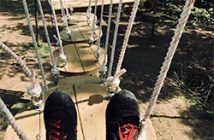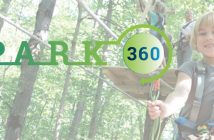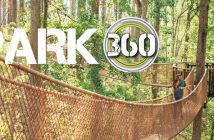Since adventure parks grew out of the experiential education movement, adventure parks are not exactly strangers to education. However, a few parks, in pursuing school groups (as well as scout groups and camp groups during the summer months), have found some different and creative ways of dovetailing fun and learning.
A well-constructed school program can make everyone a winner: the park wins by attracting group business, the school wins by fulfilling a component of its curriculum requirements (physical education, leadership training, environmental education), and the kids—well, they have a blast while learning something in the process.
To build a successful school program, however, requires park operators to think and operate at least to some degree outside the normal logistical/marketing box. For starters, schools aren’t reached by simply advertising/marketing outreach in various media or Facebook promotions, the 21st-century version of hanging out a shingle. A network of teachers must be nurtured, and parks must develop an understanding of how park activities can be shaped to match curricular needs.
It certainly helps if you are already an educational organization, or are closely affiliated with one. That’s the case at Heritage Museums and Gardens in Sandwich, Mass., on Cape Cod. Heritage had been attracting school groups for years, introducing roughly 7,000 kids to its various exhibits and programs. Three years ago, it stepped beyond its core garden-and-museum business by partnering with Outdoor Ventures to create an adventure park as “something new and exciting to offer,” according to Heritage president and CEO Ellen Spear.
In other words, Spear and her team didn’t need to build a school-group customer base from scratch. Heritage was already well connected within the regional school network, with well-established lists of teachers and superintendents to tap into. Still, Heritage had to assure its school contacts that “something new and exciting” also had some educational value. As Spear puts it, “Kids learn best when they are doing something experiential.”
Heritage has approached experiential education from two angles: first, with a focus on leadership, and second, through its Discovery programs, with a focus on woodlands education.
Again, Heritage was blessed with an intrinsic advantage as an educational institution, with credentialed, professional educators on staff. But climbing staff in the park are also included in Heritage’s educational training, so that all personnel are on the same page regarding curricular objectives when program activities move into the adventure park. Developing good educational programs is what Spear calls “a collaborative creative process” involving Heritage’s executive staff, educational staff, park and gardens guides, and others interacting with school personnel.
School groups, of course, come in different ages, and it might seem that a program for, say, a K-2 group would be significantly different from a program for a seventh/eight-grade group. Some modification is necessary, according to Spear, but perhaps less than might be expected. “The content stays the same,” says Spear; what differs from age group to age group are the type of language used and the tasks involved in activities.
Mike Smith, president of Arbortrek Adventure Tours, which operates three parks in Michigan and Vermont, has a slightly different take on developing school programs. Smith contends that with the No Child Left Behind Act of 2004, “school budgets disappeared” and a curricular focus for school groups on field trips was one of the casualties. (As someone with an educational background in the Detroit school system, Smith says this with a hint of regret.) The appeal now of park visits for school groups, according to Smith, is usually more recreational than educational.
The end of the school year in late spring, he says, is often “not very productive,” with year’s curricular objectives largely fulfilled and with kids anticipating summer vacation. Hence, non-classroom activities—e.g., a field trip to an adventure park—might be a better way of engaging kids, both intellectually and physically.
Still, Arbortrek school group programs aren’t simply an exercise in glorified playground recess; they focus on the more common approaches of team building and team bonding.
Striking a Balance
Clearly, the visit of any school group to an adventure park is going to be a mix of recreation and education, and where the balance is struck is going to vary from park to park and group to group. Regardless, Smith agrees with Spear that a “cross-trained staff” with at least some education training is essential. And structuring a program that meets a school’s demands as well as a park’s revenue objectives requires planning.
Where to go for that? Smith points to “a huge network of people who have been doing this for years. There are a lot of resources that can be tapped into, with a long-rooted history in therapeutic and educational training.” Teachers, psychologists, social workers, educational professionals at universities, parents’ groups, etc., there is a lot of knowledge out there to be applied. Consult and plan ahead of time; there is no excuse to be winging it when you do reach out to the school-group market.
From there, work to build connections within the local and regional school community. Spear says that Heritage attracts school groups from all over New England, so the potential school market need not be strictly local. A nice bonus of a healthy school business is that if a trip proves successful, schools and teachers often reschedule trips year after year. A single visit can turn into something like a chain letter over a period of several years.
Once a school has been engaged, pre-visit coordination between school and park is essential. Know the objectives of the visit—team-building and leadership skills are common goals—and craft an activities program that assures that those objectives can be met, keeping the age range of the group in mind. The objectives of a visit for a K-2 group and a middle-school group might be the same, but the program of activities, along with the length, structure, and content of the program, can be very different.
Expect the prime time for school groups to be April and May. Smith says there is typically little interest in field trips in the fall, when both students and teachers are adjusting to a new educational and social structure within the classroom.
Attend to logistics that might diverge from ordinary park operations. School groups typically arrive in buses, so a park might need sufficient parking for as may as five busloads of kids. Due to practical constraints of staffing and parking, Smith limits groups to a maximum of 100 to 120 students. Spear says Heritage shoots for group sizes of about 20 kids per leader; Smith is a little more conservative, seeking to keep the leader-to-student ratio in the 10- to 15-to-one range. In addition, schools should provide chaperones, typically parent volunteers.
To the fullest extent possible, make sure all necessary liability waivers get signed by parents before kids arrive at the park.
Upon arrival, it is important that kids become immediately engaged so that they are not dawdling around or wandering off while paperwork is attended to. Usually, extra liability coverage is not necessary for school groups, but check with both your insurance carrier and the school from which a group is coming. According to Smith, some districts require additional coverage.
Finally, make available a space where to entire group can gather for snacks, announcements, head counts, etc.
School groups (and scout and camp groups in the summer) can be a terrific source of revenue. Developing a school program might require a few tweaks in logistics and activities, a little extra staff training, and reaching outside the usual marketing/advertising framework. But do the math: hundreds of paying customers during what is normally a shoulder season for most parks (April and May) and a likelihood of regular, repeat business. It’s worth getting schooled.






